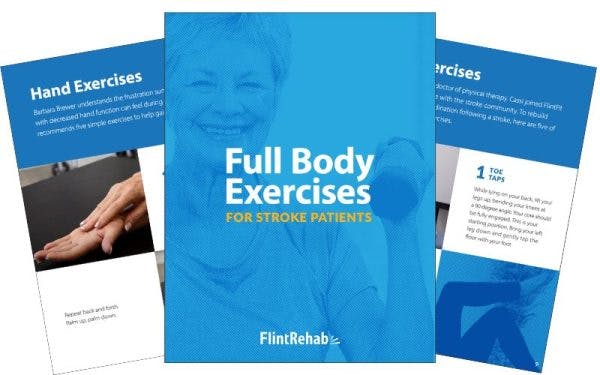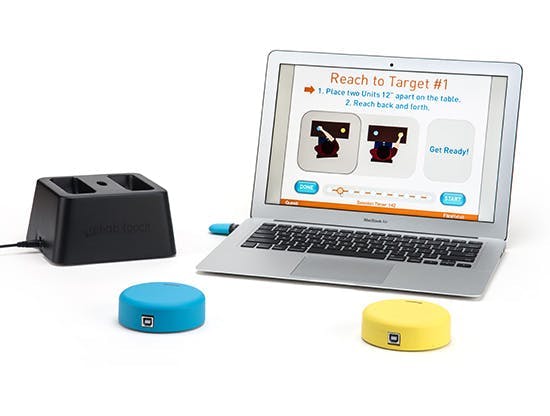If you or a loved one are navigating recovery after a stroke, traumatic brain injury (TBI), or spinal cord injury (SCI), you may have come across two popular types of electrical stimulation: NMES and TENS. These devices can support rehabilitation and pain management, but they work in different ways and serve different goals. So which one is right for your situation?
Let’s explore the differences between NMES and TENS, how they work, where to place the electrodes, and how to choose the best option for your recovery needs.
What is NMES?
NMES stands for Neuromuscular Electrical Stimulation. This type of therapy sends electrical impulses through surface electrodes to activate muscle contractions. Unlike passive treatments, NMES encourages muscles to engage, which helps rebuild strength and function. It’s commonly used in neurorehabilitation to prevent muscle atrophy and retrain motor pathways.
After an injury like a stroke, brain injury, or spinal cord injury, muscles can become weak or paralyzed due to disrupted communication between the brain and the body. NMES helps bridge that gap by providing an external cue to stimulate the muscles, reinforcing neural pathways through repetition and activity.
What is TENS?
TENS stands for Transcutaneous Electrical Nerve Stimulation. While it also uses electrical impulses, its goal is different. Rather than targeting muscles, TENS focuses on sensory nerves. Its main function is to provide relief from chronic or acute pain by interfering with pain signals before they reach the brain.
Many stroke, TBI, or SCI survivors experience lingering pain, whether from spasticity, nerve damage, or muscle strain. TENS offers a non-invasive way to manage these symptoms, improving comfort without medication. It typically feels like a gentle tingling and is often used multiple times per day.
Comparing NMES and TENS: Mechanism and Goals
The fundamental difference between NMES and TENS lies in what they target and the outcome they aim to achieve. NMES activates motor nerves to produce muscle contractions, helping restore strength and function. TENS, in contrast, stimulates sensory nerves to block pain signals or trigger endorphin release.
In practical terms, someone using NMES may see their hand or leg visibly move during treatment, as the muscle responds to the electrical impulse. With TENS, there is no movement, just a tingling sensation over the skin where the electrodes are placed.
This makes NMES a better fit for motor rehabilitation, while TENS is more appropriate for managing pain.
Electrode Placement: Why It Matters
Correct electrode placement is essential for both NMES and TENS to be effective. For NMES, placement should be directly over the muscle you wish to target. Therapists often locate the muscle’s motor point, where nerves enter the muscle belly, to ensure strong and efficient contractions. The electrodes are usually placed along the direction of the muscle fibers.
For example, to stimulate hand movement after stroke, electrodes may be placed along the wrist extensors on the forearm. For issues like foot drop, placement is typically over the shin muscles that lift the foot.
TENS electrode placement is more flexible but still important. The pads are positioned around the area of pain, often in a crisscross or side-by-side arrangement. Placement can vary depending on whether the pain is superficial or deeper in origin, but the goal is always the same: interrupting the pain signals before they reach the brain.
Someone with post-stroke shoulder pain might place one pad on the front of the shoulder and one on the back, creating a loop of stimulation around the painful joint.
Choosing Between NMES and TENS for Stroke Recovery
Stroke recovery often involves both regaining lost function and managing new or persistent pain. This means that both NMES and TENS may have a place in a comprehensive therapy program.
NMES is frequently used to support motor recovery, especially when muscles have become weak or inactive. It’s particularly useful for stroke survivors dealing with foot drop, impaired hand movement, or limited mobility in the arm. By activating these muscles repeatedly, NMES can help the brain re-establish connections to the affected limbs.
TENS, on the other hand, is widely used for post-stroke pain, especially in the shoulder. Hemiplegic shoulder pain can be intense and persistent, often due to subluxation, spasticity, or general immobility. TENS offers a gentle, drug-free method for addressing this discomfort, helping survivors tolerate more physical activity during rehab.
TENS vs NMES After Traumatic Brain Injury
For individuals recovering from a traumatic brain injury, goals can vary greatly depending on the severity and type of injury. NMES can be a useful tool for those regaining motor control or reducing motor atrophy in those with severe TBI. It helps activate weakened or underused muscles and can be incorporated into task-specific training for daily activities.
Some TBI survivors, however, experience chronic headaches, muscle tightness, or neuropathic pain. In these cases, TENS may be more helpful, particularly if pain is limiting participation in therapy. It can provide short-term relief and reduce reliance on medication.
In many rehabilitation settings, NMES and TENS are used in tandem to maximize both comfort and recovery potential.
Electrical Stimulation After Spinal Cord Injury
Spinal cord injuries are complex and highly individualized. Depending on whether the injury is complete or incomplete, NMES may be used to stimulate partially functioning muscles to prevent atrophy and maintain strength.
NMES is often integrated into functional electrical stimulation (FES) systems, which can support activities like cycling, stepping, or standing. Even in cases where voluntary movement is limited, NMES can promote circulation, reduce spasticity, and preserve muscle mass.
TENS plays a different but equally valuable role. Neuropathic pain is common in SCI survivors, often resistant to medication. TENS offers a non-invasive approach to pain relief and may also play a role in managing spasticity, improving quality of life and supporting participation in therapy.
NMES vs TENS: Looking At Key Differences in Function, Goals, and Use
When deciding between NMES and TENS, it helps to see how they stack up side by side. While both use electrical stimulation, their purposes, mechanisms, and benefits are quite different.
The table below breaks down the key differences to help you understand which option may be best suited for your recovery needs after stroke, brain injury, or spinal cord injury.

How to Use These Devices Safely
As with any therapy, proper use of NMES and TENS is essential. While both are generally safe, certain conditions require caution. Individuals with pacemakers, implantable defibrillators, or seizure disorders should consult their physician before starting electrical stimulation. Electrodes should not be placed over the heart, carotid arteries, or broken skin.
It’s also important to start slowly. Begin at a low intensity and gradually increase to a comfortable level. Some users may experience mild skin irritation; rotating electrode placement and cleaning the skin beforehand can help minimize this. Those with conditions affecting sensation should be particularly careful before using electrical stimulation, and check the skin underneath the electrodes regularly for redness or irritation.
What to Look for in an NMES or TENS Device
When shopping for a device, consider your primary goal. For muscle stimulation, look for NMES devices with adjustable frequency and pulse width settings, as well as strong output capabilities. Dual-channel models allow you to stimulate two muscle groups at once, which can be helpful during more complex rehab exercises.
For pain management, TENS devices with multiple modes, customizable intensity, and pre-set programs are often easiest to use. Some models include timers and rechargeable batteries for convenience.
Many modern devices combine NMES and TENS functionality, making them a versatile choice if you need both types of support. Talking with your therapist about which device(s) may be best for you is highly recommended.
Getting the Most from Your Therapy
Regardless of which device you choose, consistency is key. Regular sessions yield better results, especially when paired with other forms of therapy. NMES should ideally be used during active movement or functional tasks to reinforce muscle patterns. TENS may be used throughout the day as needed for pain relief.
Always monitor your response. If you experience discomfort, irritation, or unusual symptoms, pause treatment and consult your provider.
Final Thoughts
Both NMES and TENS can play important roles in recovery from neurological injury. While NMES supports muscle re-education and motor function, TENS offers pain relief and comfort. Choosing the right device depends on your specific needs, recovery goals, and where you are in your rehabilitation journey.
Talk to your healthcare provider or therapist to determine which approach is best for you. With the right guidance and consistent use, these tools can become powerful allies on your path to recovery.









